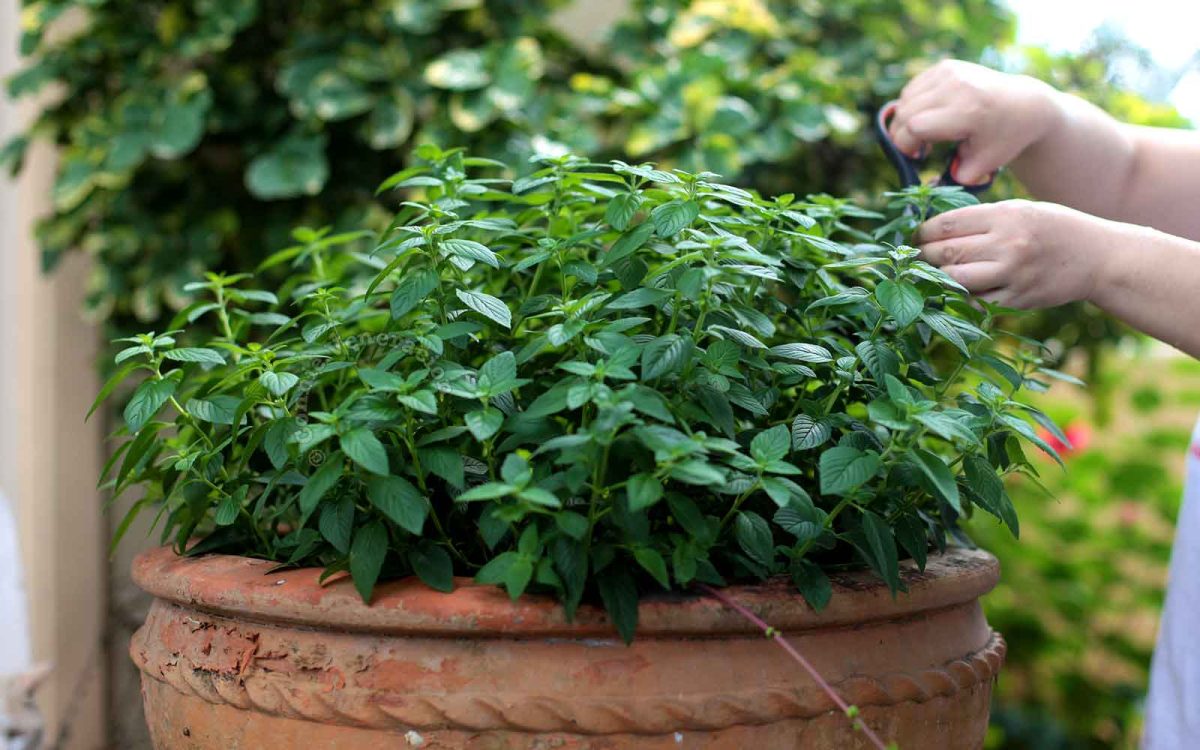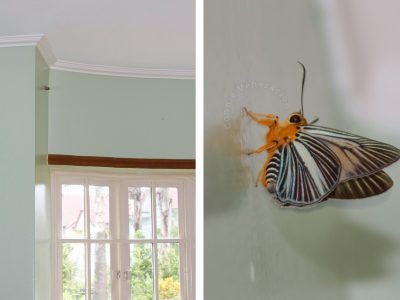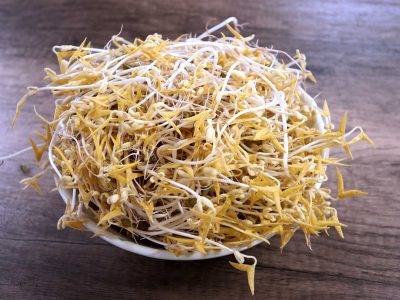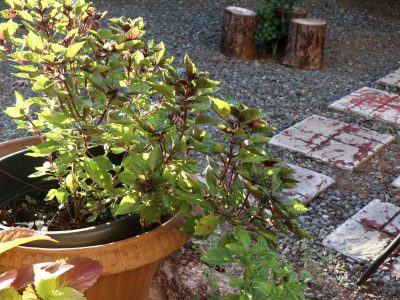Just so it’s clear: we’ve never tried growing mint from seeds. We start with seedlings bought from plant / garden shops and propagate the seedlings.
Once we have our mint seedlings, we move them to pots or troughs (that’s peppermint in the photo above, by the way).
Why not plant them directly into the soil? The roots of the mint grow and spread so much, invasive like weeds, that they can deprive nearby plants of water and soil nutrients. That was the first mistake we made when we planted mint back in the old house. We planted the mint seedlings directly into the soil next to the dill, and the mint eventually killed the dill. We wouldn’t understand why until much later but, by then, it was too late.
Still, if you want to go the direct-to-the-soil route, there is a way to protect the other plants growing nearby. Plant the mint in a pot, a strong one that won’t break, and plant the pot into the soil. The container will prevent the mint’s roots from growing horizontally, thereby protecting your other plants.
Mint likes water and the sun
When I say that mint likes water, I don’t mean keep them wet all the time. They like a moist soil but they also like the sun. Not direct sunlight all day but direct sunlight a few hours a day and a shady but still bright spot the rest of the time.
When and how to harvest mint
Personally, I prefer to wait until the main stem looks sturdy before harvesting. Height is really irrelevant because some mint plants are squat little things that don’t grow tall too much. So, I prefer to look at the main stem to see how fat it has grown. The fatter it is, the sturdier the plant and, ergo, the more mature and ready for harvesting. Harvesting can mean just picking the leaves (like I often do) or, if you need whole sprigs, cut the stems about two inches from the soil.
Pinch off the flowers for a more bountiful harvest
When the mint starts to flower, leaves will stop growing on top of the stems that has flowers. Since you want the mint leaves and not the flowers, pinch off the flowers to encourage the plant to grow more branches and leaves.
How to grow more mint from a single plant
When your mint is mature enough for harvesting, it is mature enough to be considered a “mother plant” from which you can take cuttings that you can grow into new plants. Yes, just like basil. Don’t just pull and pinch because you may uproot the darn mother plant. Cut instead. Use sharp shears to cut off stems about two inches from the soil.
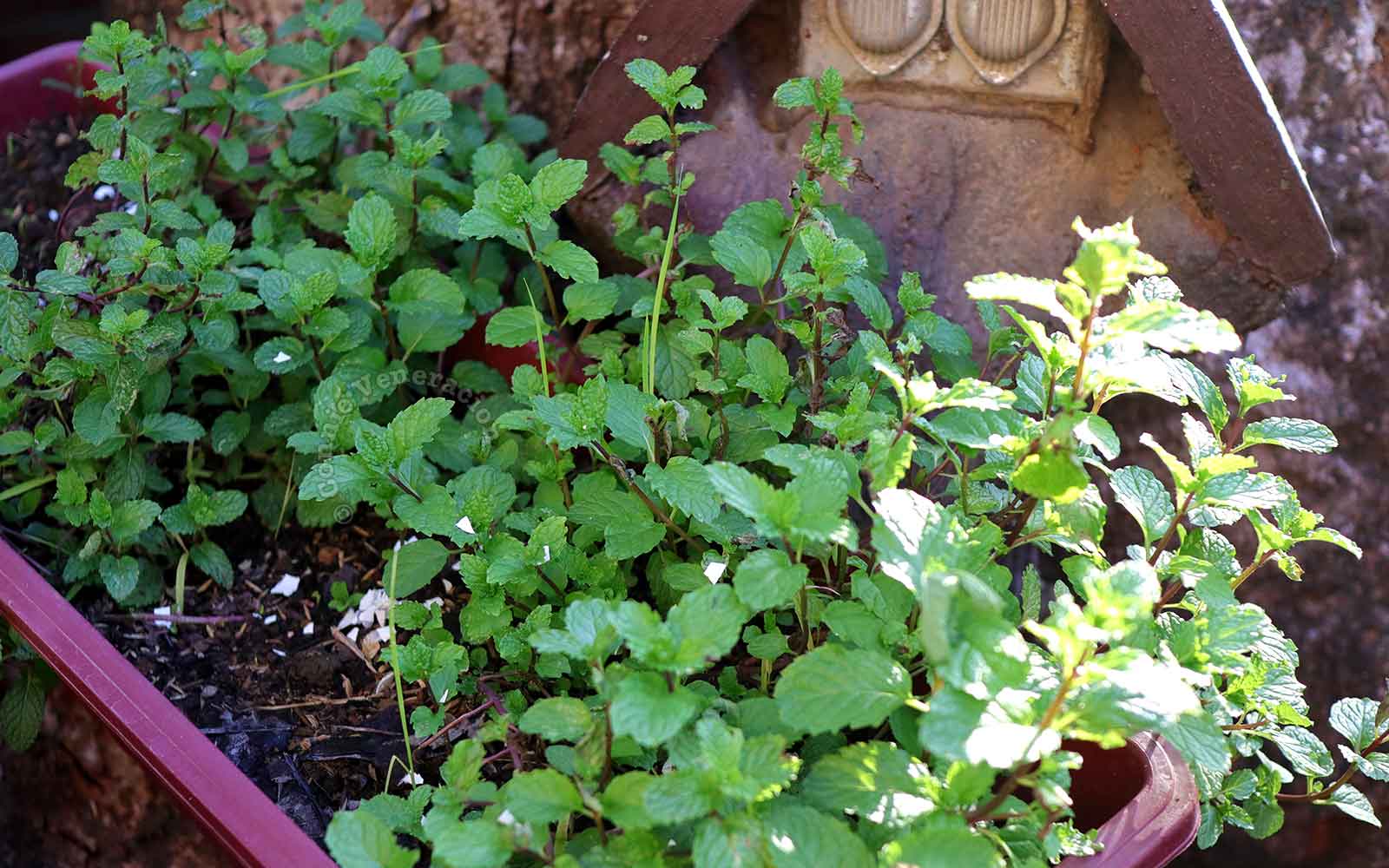
There are three ways to grow the new cuttings:
1. In a jar or bottle of water. Just drop the cuttings in water making sure that the leaves are above the water. Otherwise, the leaves might rot and damage the stems. It is actually a good idea to cut off the leaves except the topmost ones. Leaving a few will make it easier to tell if the cuttings are in fact growing or if they have died. Place the jar or bottle in a bright area but away from direct sunlight. Replace the water every other day. Roots should start growing in about a week. When the roots are more than 1/4 inch long, you can transplant your new mint to a container with soil.
2. Planting directly in soil — in a container, of course. Bore a small hole into the soil, drop the cutting in making sure that a considerable portion of the stem is embedded in soil. Then lightly push the soil down to secure the cutting.
3. The third method using cocopeat, we have never tried but you can check out Geekgardener for more details.
Is it possible to grow mint indoors?
Some say it is possible so long as the pot is placed on a sunny window.
Updated from posts originally published in May 10, 2014, Ocotber 15, 2009 and July 18, 2008

